Erté Fashion Paper Dolls of the Twenties
Too many toys talk today. Too many toys today gabble, gong, sing, squawk, cry, moan, and give audio direction. Too many toys today require internal chips and AA batteries—not included. Too many toys today are reliant on screens. This is not to say that all is lost. There are still plenty of kids out in the field playing soccer or on the back porch with Candy Land, and I know one wee girl in particular who adores the Fischer Price little people. Kayla has good taste; she likes the antique wooden-headed ones over the later all-plastic editions. She’s two and some months, and as time runs rapidly, it won’t be long now before she will be keen on cutting out these paper dolls with the help of her Great-aunt Dee.
Printed on heavy paper stock, posing in their undergarments, demurely awaiting their fittings, we find the mannequins Lison, Marion, Ninon, Odette, Paulette, and Margot. If these names have an old-fashioned ring to your ears, if they make you think of Fred and Ginger movie sets or curvaceous classic Delahaye motorcars, this is logical. Erté, born Romain de Tirtoff, lived to the sweet old age of 98, passing in 1990. He was most active in the teens, twenties and thirties, among his other work, drawing covers for Harper’s Bazaar; but he had kept at it to the end, and the world today all but overflows with his art deco drawings, lithographs, prints, illustrations, and sculpture. If you regularly do the New York Times crossword puzzle, you will remember the name as it often pops up there, a short word with an “e” on either end being useful to puzzle creators. During the time I was gathering notes for this piece, I came across a window display of Erté’s work in a nearby town’s antique shop. Erté seems to be everywhere.
The renderings in this book were created by Johnston “according to the specific instructions” of the great man himself. The artwork is professionally stylish, and the book is made to be used. Each of the gowns, robes, and wraps has fold-down tabs, fashioned to hang it on a particular paper model, and each garment is labeled on one of these tabs with the name of the model for whom it was specifically designed. The reason for this is that each of the mannequins is drawn in a slightly different pose so that each garment will fit correctly only on a given doll. Each doll has but one full arm and hand showing—with the opposing arm draped behind her body, hiding that hand completely. This device allows variations in the poses for each of the models, as some of the costumes are designed with the “hidden” arm and hand illustrated as part of the whole. Paulette has her right wrist and hand behind her back, but on two of her gowns, the right hand is drawn with the gown so that, for that particular pose and dress, Paulette is presented with both of her hands in view. The cunning of this arrangement is admirable.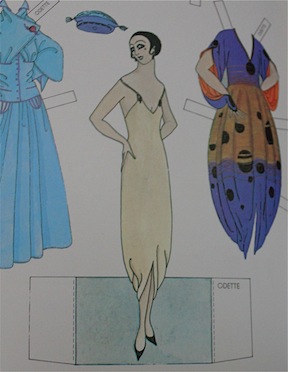

Erté’s designs are sumptuous, lithe, regal, intricate, most of them reaching to the ankle or to the floor. Daisy Buchannan and Jordan Baker would feel easy in many of them. Johnston’s renderings appear to be outlined with a pro quill pen, giving a light but sinuous line, then colored in with one to three layers of wash: peach, lavender, sky blue, ultramarine, rose, grey, pale yellow, white, and black. Only the most critical eye will fault her work, and many a child will find the dolls and the garments exciting, lovely, enticing to the imagination, letting the hours of play go by with delight and wonder.
When I first contemplated reviewing this book—I had picked it up at a sale at my local library, I had planned in my introduction to bemoan the dearth of paper dolls, assuming that they are hopelessly out of fashion. But a quick trip to Amazon reveals over twenty pages of all sorts of paper dolls: vintage Barbie, Joan Fontaine (Joan Fontaine?), Shirley Temple, Steampunk, Disney Princesses, Nancy Drew, Saint-Laurent, William and Kate, et al. A second volume of Erté’s fashions is among them. My hope is that these books are actually purchased for children, cut out and used for a child’s amusement, and although it would not be surprising to find that many are purchased as collectables by hobbyists, I am confident that my hope is realized more often than not. And don’t be concerned if, on your last trip to the corner store, you forgot to pick up the usual twelve-pack of AA batteries.
Copyright 2013, Bill Wolf (speedreaders.info).




 RSS Feed - Comments
RSS Feed - Comments



















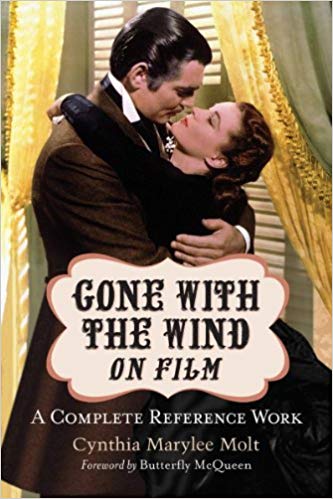




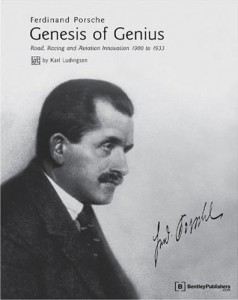

















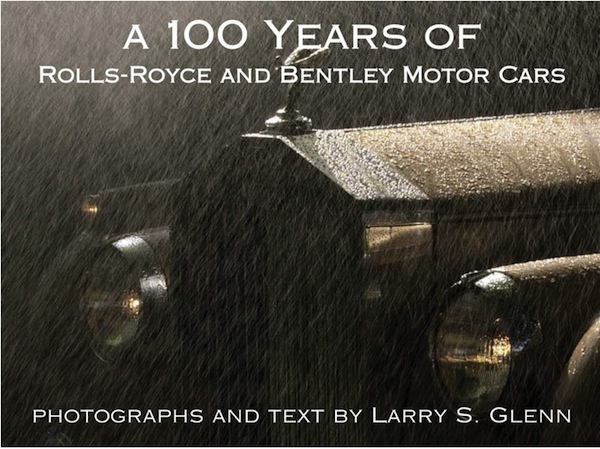




















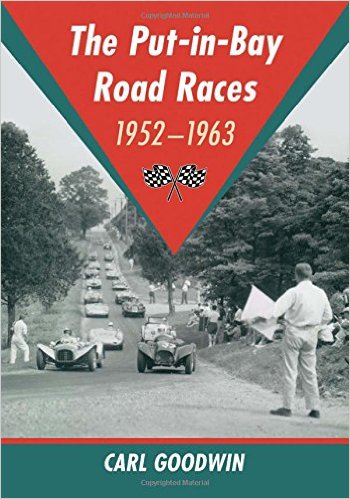






 Phone / Mail / Email
Phone / Mail / Email RSS Feed
RSS Feed Facebook
Facebook Twitter
Twitter